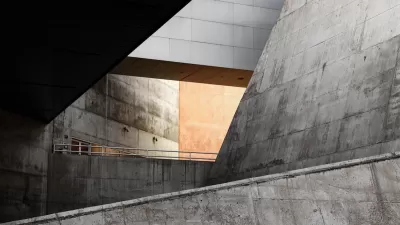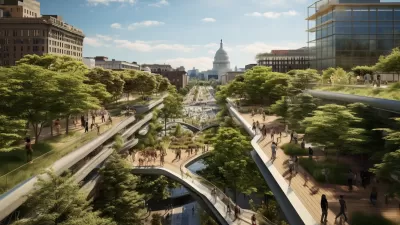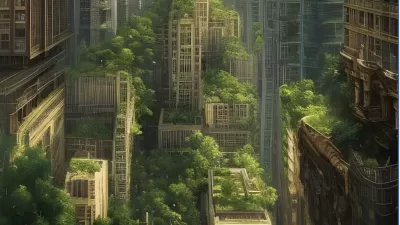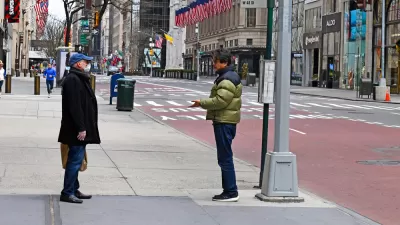The former locations of nuclear missile sites are more mundane than you probably realize. Geoff Manaugh explores satellite images of Los Angeles, and other cities, for examples.
Geoff Manaugh writes:
During the Cold War, many missile defense sites—precisely because their purpose was to guard infrastructure of vital national interest—were housed in urban or suburban locations. Los Angeles in particular, thanks to its aerospace facilities, military bases, and booming postwar population, became one of the most fortified regions in the United States.
A surprisingly long list, and corresponding collection of satellite images, follows that statement, showing locations around the city that are familiar to even short-term residents of Los Angeles. Manaugh also notes another variety of former nuclear facility found in the region:
In other cases, L.A.'s former missile sites have blended back into the natural landscape with an ease that is both ecologically inspiring and somewhat disconcerting, with nature's apparent triumph serving as an acknowledgement of the narrowly averted horrors of nuclear war. The launch site known as LA-43L is now a public park and "nature education center" near the coast west of Long Beach. Aside from an aging concrete pad beneath which missiles were once kept, the most distinctive feature of the landscape today is a Native Plant Demonstration Garden.
The article includes lots of links to previous coverage of the facilities, as well as the kicker: these facilities, found in cities all over the country, "remain an otherworldly reminder of how close our nation came to doomsday."
FULL STORY: Where Los Angeles and Other American Cities Used to Store Their Nuclear Missiles

What ‘The Brutalist’ Teaches Us About Modern Cities
How architecture and urban landscapes reflect the trauma and dysfunction of the post-war experience.

‘Complete Streets’ Webpage Deleted in Federal Purge
Basic resources and information on building bike lanes and sidewalks, formerly housed on the government’s Complete Streets website, are now gone.

The VW Bus is Back — Now as an Electric Minivan
Volkswagen’s ID. Buzz reimagines its iconic Bus as a fully electric minivan, blending retro design with modern technology, a 231-mile range, and practical versatility to offer a stylish yet functional EV for the future.

Healing Through Parks: Altadena’s Path to Recovery After the Eaton Fire
In the wake of the Eaton Fire, Altadena is uniting to restore Loma Alta Park, creating a renewed space for recreation, community gathering, and resilience.

San Diego to Rescind Multi-Unit ADU Rule
The city wants to close a loophole that allowed developers to build apartment buildings on single-family lots as ADUs.

Electric Vehicles for All? Study Finds Disparities in Access and Incentives
A new UCLA study finds that while California has made progress in electric vehicle adoption, disadvantaged communities remain underserved in EV incentives, ownership, and charging access, requiring targeted policy changes to advance equity.
Urban Design for Planners 1: Software Tools
This six-course series explores essential urban design concepts using open source software and equips planners with the tools they need to participate fully in the urban design process.
Planning for Universal Design
Learn the tools for implementing Universal Design in planning regulations.
City of Albany
UCLA Lewis Center for Regional Policy Studies
Mpact (formerly Rail~Volution)
Chaddick Institute at DePaul University
City of Piedmont, CA
Great Falls Development Authority, Inc.
HUDs Office of Policy Development and Research





























